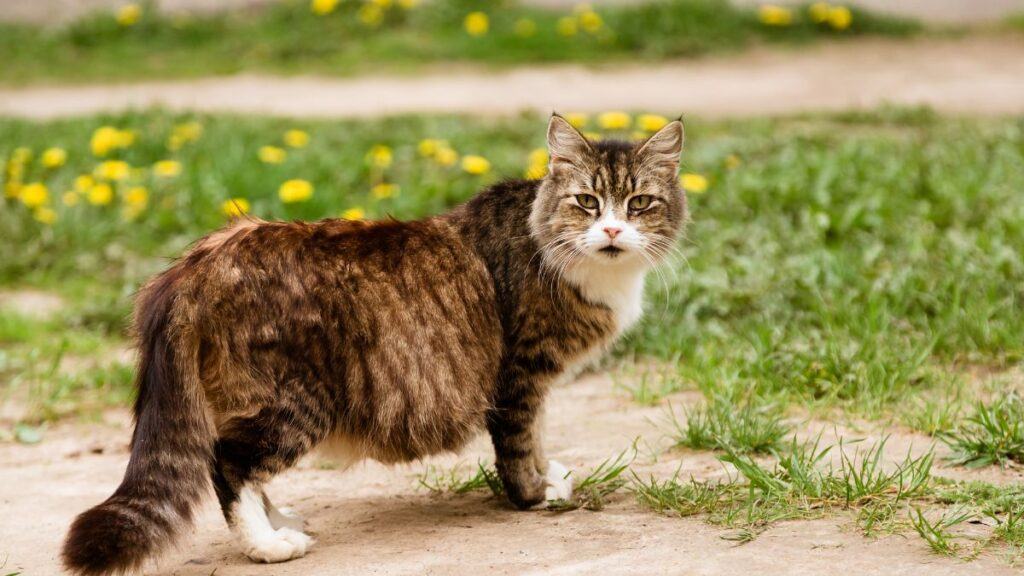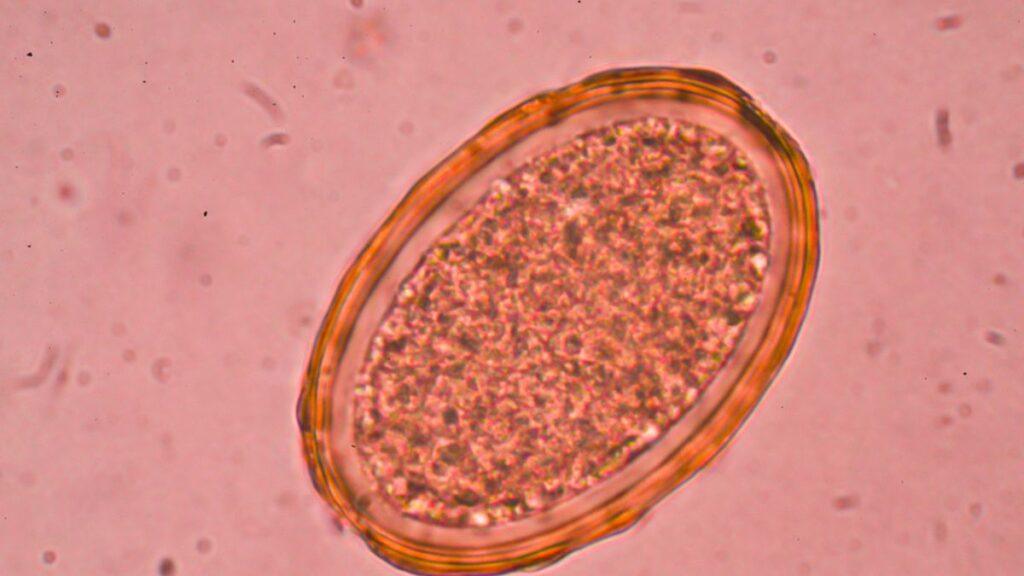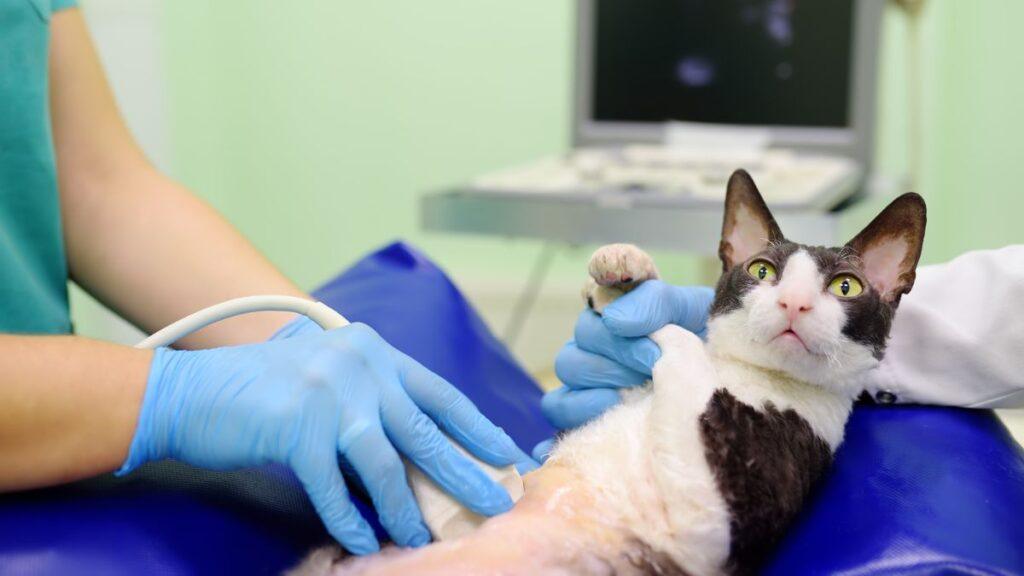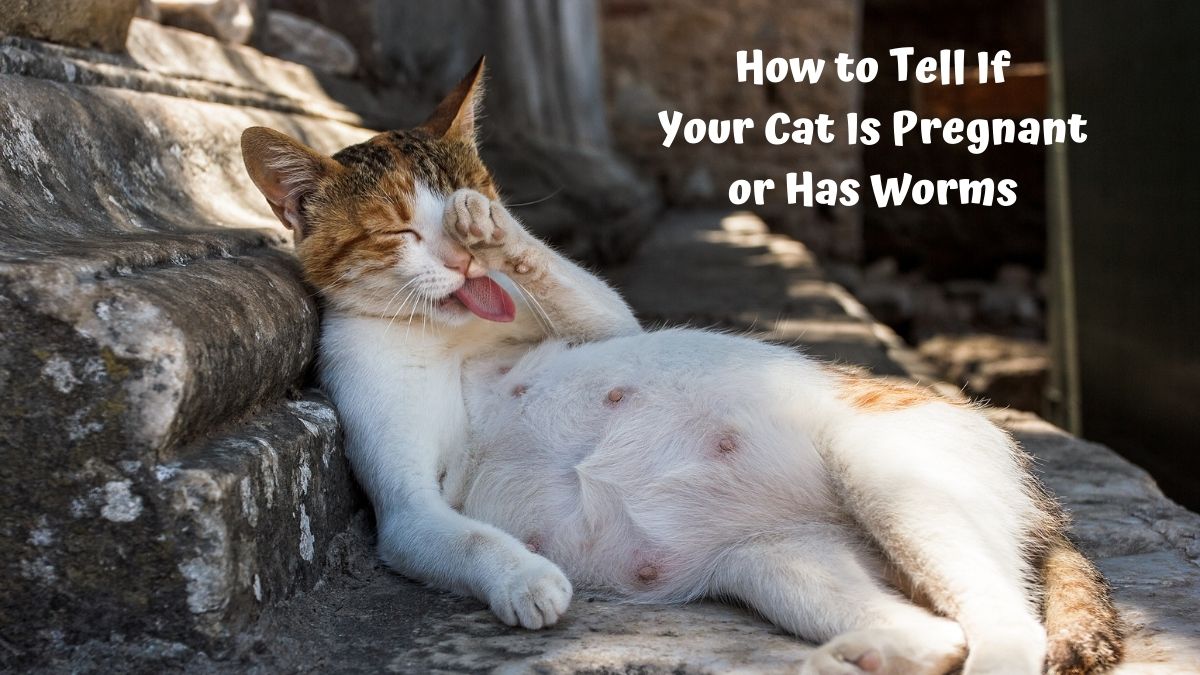Discover the vital signs of cat health in this engaging guide that spotlights the dual possibilities of feline pregnancy and the threat of intestinal worms.
With expert precision, we highlight the physical and behavioral clues that may signal your cat is carrying kittens or suffering from unwelcome parasites.
We cover it all, from the gentle swell of a pregnant belly to the concerning symptoms of worm infestation.
We will also explore essential strategies for prevention and treatment, underscoring the critical need for veterinary expertise.
Stay informed and proactive in safeguarding your cat’s health, ensuring a joyful journey through pregnancy or a swift recovery from work-related issues.
Pregnant Cat or Worms?

Identifying Cat Pregnancy
Recognizing pregnancy in female cats requires observation of physical changes, behavioral signs, and veterinary confirmation to ensure accurate detection.
Physical Changes
A pregnant queen, commonly called a mother cat, will exhibit noticeable physical changes as the gestation period progresses.
Around the third to fourth week, you may observe weight gain and a swollen belly, indicative of the developing kittens.
The pregnant cat’s nipples will also become more prominent and may turn a darker pink shade, a phenomenon known as “pinking up.”
The mammary glands will enlarge as the body prepares for nursing.
| Week of Age | Physical Change |
|---|---|
| 3-4 Weeks | Swollen belly, weight gain |
| 4-5 Weeks | Nipples ‘pink up’, mammary glands enlarge |
Behavioral Signs
Behavior in a pregnant queen can vary, but some common behavioral signs typically indicate pregnancy.
She may seek more affection or, conversely, become more reclusive as she looks for a safe place to give birth.
Her appetite will likely increase as she requires more calories to support the growing kittens. It is not uncommon for a pregnant cat to be fed kitten food due to its higher nutrient content.
- Increased affection or reclusiveness
- Greater appetite; may need kitten food
Veterinary Confirmation
Veterinary confirmation is the most reliable method to confirm a cat’s pregnancy. A veterinarian can perform an ultrasound to detect fetuses, usually by the third week of pregnancy.
As the gestation period advances, a physical exam can confirm the pregnancy by palpating the abdomen.
However, a professional should only do this to prevent harm to the kittens. Other methods, like X-rays, can be used in the later stages of pregnancy to estimate the number of kittens.
- Ultrasound: detects fetuses by week 3
- Physical exam: palpates abdomen in later stages
- X-ray: estimates the number of kittens in later pregnancy
Understanding Intestinal Worms in Cats

Intestinal parasites are a common health concern for cats, affecting both young and adult kittens.
Knowledge of worm types, signs of infestation, and their life cycle is critical for proper diagnosis and treatment.
Common Types
Common intestinal worms in cats include:
- Roundworms: These are the most prevalent, especially in kittens.
- Tapeworms: Cats often acquire tapeworms through infested fleas.
- Hookworms: These are smaller than roundworms but can be more harmful.
- Whipworms: While less common, they can still affect a cat’s health.
Signs of Infestation
Signs that a cat may have intestinal worms include:
- Visible Worms: Adult worms or tapeworm eggs may appear in feces or vomit.
- Weight Loss: Despite a healthy appetite, the cat may lose weight.
- Diarrhea or Vomiting: Can occur, sometimes with blood.
- Swollen Abdomen: Especially noted in kittens with heavy roundworm infections.
- Poor Coat Condition: The cat’s coat may look dull and lifeless.
Lifecycle of Worms
The life cycle of intestinal worms typically involves:
- Ingestion: Cats may ingest the infective eggs or larvae from the environment or an infested flea.
- Development: Once inside, the larvae mature into adult worms.
- Reproduction: The adult worms reproduce, releasing new eggs through the cat’s feces.
- Spread: These eggs contaminate the environment, infecting other animals or reinfecting the host.
Understanding the types of worms that can infect cats is crucial for pet owners.
Recognizing the signs of an infestation and knowing the worms’ life cycle helps cat owners protect their feline companions from these internal parasites.
Regular fecal sample testing and preventative measures are advisable.
Prevention and Treatment

Preventing and treating worms in cats is essential to ensure the health of both pregnant females and kittens.
Effective strategies involve deworming protocols, environmental control, and preventive measures.
Deworming Protocols
Regular deworming is crucial for the health of kittens, which can receive parasites through the mother’s milk and pregnant females.
A veterinarian can recommend appropriate dewormers based on the cat’s age, health, and needs.
Kittens typically start deworming at 2-3 weeks of age and follow a schedule into adulthood. Deworming pregnant cats requires particular care to avoid harming the developing kittens.
- Kitten Age: Deworm at 2-3 weeks, then follow vet’s schedule.
- Pregnant Females: Consult a vet for safe deworming options.
Environmental Control
Maintaining a clean environment helps prevent worm infestations. Keep litter boxes clean and sanitized to avoid the spread of parasites.
For outdoor cats, reducing exposure to fleas and potentially contaminated areas is important. Provide a safe place, like a cardboard box or specific shelter, to reduce contact with worms.
- Indoor Cats: Clean and disinfect litter boxes regularly.
- Outdoor Cats: Minimize exposure to fleas and contaminated environments.
Preventive Measures
To prevent worm infestations, practice good hygiene and consider flea treatments, as fleas can carry tapeworm eggs.
Indoor cats generally experience fewer risks, but regular check-ups are still advised. For outdoor cats, vigilant monitoring and preventive treatments are key.
Providing nutritionally balanced dry food or specific kitten food can promote overall health and infection resistance.
- Nutrition: Offer dry food or specially formulated kitten food for balanced nutrition.
- Flea Control: Implement regular flea treatment protocols to curb infestation risks.
Health Management of Pregnant Cats

When managing the health of a pregnant cat, it is crucial to focus on her nutritional needs, establish a safe environment, and closely monitor for any complications that may arise.
Nutritional Needs
A pregnant queen’s diet supports her increased energy needs and the development of healthy kittens. She will need a high-quality, nutrient-rich food formulated for growth or all life stages.
She must have constant access to fresh water to stay hydrated, as water aids in developing body tissues and ensures proper milk production for the soon-to-be-born kittens.
Creating a Safe Environment
Creating a quiet place where a pregnant cat feels secure is essential. A safe space can be a nesting box or a secluded area with comfortable bedding.
This will allow the mother cat to retreat and rest, as physical changes may cause her to seek solitude.
Ensuring the environment is calm and free of stressors is a good idea to maintain her overall well-being and prepare her for safe delivery.
Monitoring for Complications
Regular check-ups with a vet can help in early detection of potential health issues.
It is important to watch for significant changes in the mother cat’s behavior or energy levels, as these could indicate complications.
Any signs of distress, abnormal discharge, or prolonged labor warrant immediate veterinary attention to safeguard the health of both the pregnant cat and her kittens.
Risks to Humans and Pets
Specific health risks to both humans and other household pets arise from a cat’s pregnancy and parasitic infections such as worms.
Identifying and managing these risks is critical to maintaining a healthy environment.
Zoonotic Concerns
Toxocara cati and Dipylidium caninum are parasites that can be transmitted from cats to humans.
Humans, particularly pregnant women and children, are at risk of contracting roundworm eggs, which may lead to conditions such as visceral larva migrans.
This is concerning as it can affect major organs and cause skin irritation.
- Humans Affected:
- Pregnant Women Can experience complications due to bacterial infections.
- Children: Susceptible to visceral larva migrans from contaminated soil or feces.
- Transmission Methods:
- Direct contact with contaminated feces.
- Indirect contact through intermediate hosts like fleas.
Impacts on Household Animals
Household pets may also be affected by parasites carried by pregnant cats or those with worms.
The health of these animals can be compromised, causing concern among the community of cat lovers who aspire to safeguard the well-being of their furry companions.
- Symptoms in Other Pets:
- Weight loss
- Diarrhea
- Dull coat
- Prevention:
- Regular deworming schedules
- Immediate veterinary attention for symptoms
Related: Is Bread Safe for Cats? Advice on Feline Diets and Occasional Treats
Distinguishing Between Pregnancy and Worms
Understanding whether your cat is pregnant or has worms involves observing specific symptoms and seeking a professional diagnosis.
Physical changes and behaviors provide clues, but a vet can give a definitive answer.
Comparing Symptoms
Symptoms of Pregnancy in Cats:
- Physical Changes: Enlarged abdomen, swollen nipples, increased appetite, nesting behavior.
- Behavioral Changes: Affectionate behavior, seeking quiet places.
Symptoms of Worms in Cats:
- Physical Changes: Pot-bellied appearance, visible grains of rice around the anus or in feces, sometimes weight loss.
- Health Problems: Diarrhea or bloody stool, vomiting, visible signs of worms in cat feces.
Professional Diagnosis
Pregnancy:
- Vet Visit: A thorough physical examination.
- Tests: Ultrasound or X-rays to confirm pregnancy.
Worms:
- Fecal Examination: Identifies worm eggs or segments in cat feces.
- Physical Examination: Looks for symptoms indicative of worm infestation.
A vet’s evaluation is the most reliable method to differentiate between pregnancy and a worm infestation in a cat.
Introducing Cory Haasnoot, a devoted father, loving husband, and enthusiastic cat lover. As a key content creator for CatFurLife.com, Cory blends his family values and passion for felines into engaging and informative content. He brings a unique perspective to the site, sharing cat care tips and how cats can enrich family life and bring joy to households.

